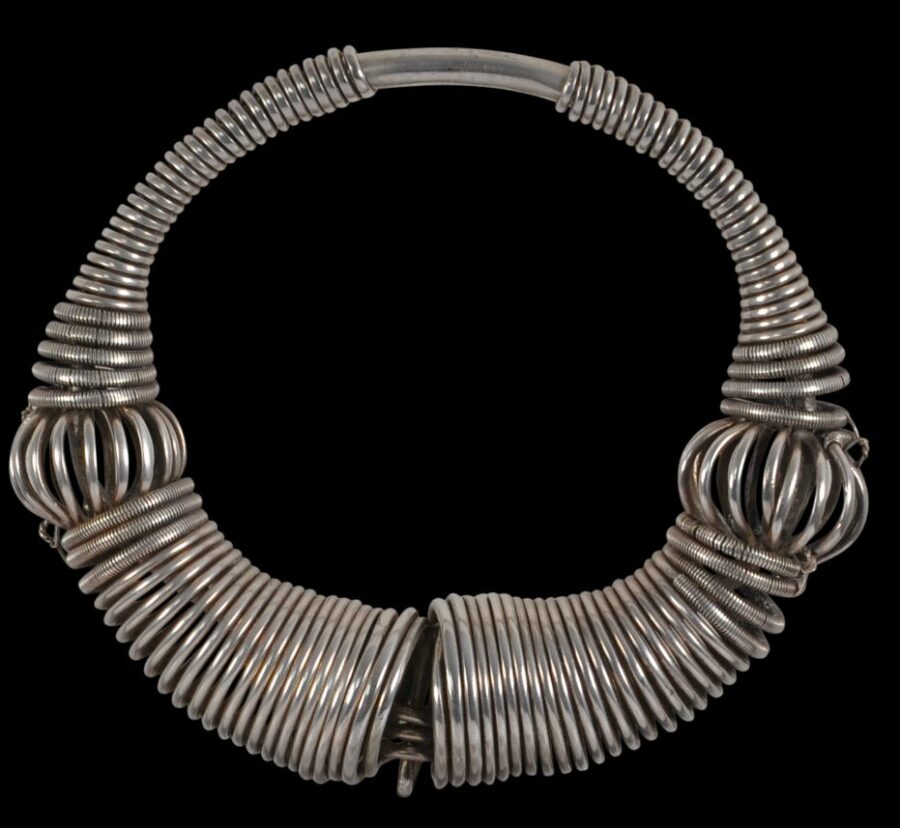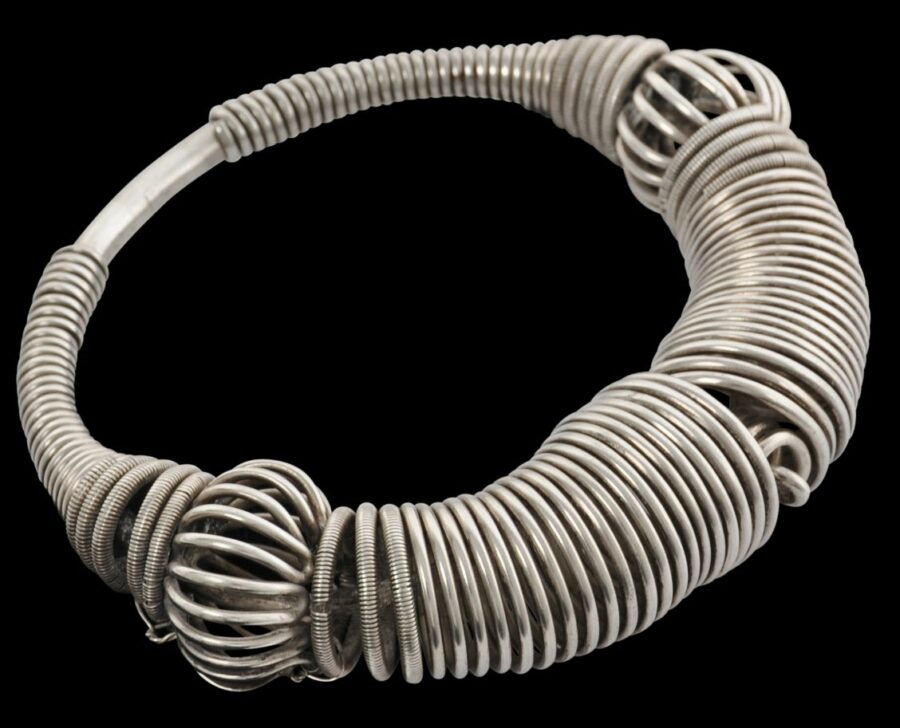This robust torque made from thick silver wire and wires wrapped with finer silver wire was worn by a range of women in the Kutch area of Gujarat, including both Hindu and Muslim women.
Such a prominent article of jewellery typically was presented to a bride as part of her dowry by either her father or prospective father-in-law. Torques of this type generally were the centrepiece of a bride’s dowry jewellery.
Of ‘C’ form, it comes apart at the front where it is kept closed with a catch.
Similar examples are illustrated in Untracht (1997, p. 229), Barnard (2008, p. 30) and Borel (1994, p. 135).
The example here is in excellent condition.
References
Barnard, N., Indian Jewellery, V&A Publishing, 2008.
Borel, F., The Splendour of Ethnic Jewelry: From the Colette and Jean-Pierre Ghysels Collection, Thames & Hudson, 1994.
Untracht, O., Traditional Jewelry of India, Thames & Hudson, 1997.




